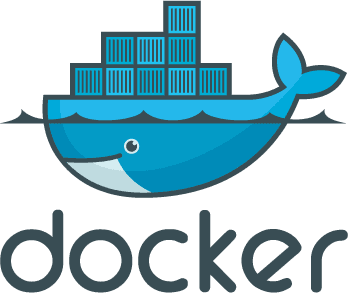
The concept of containerization has its roots in the 1970s with the creation of chroot on Unix systems paving the way for Docker, released in 2013, making it easy to deploy and run applications in different environments. Docker’s popularity exploded in the following years, and it quickly became the de facto standard for containerization. Partly due to its ease of use and the ability to package applications and their dependencies together in a single container, making it easy to deploy and run applications in different environments.
Building applications inside Docker containers have greatly simplified cloud applications’ horizontal scaling. Developers who utilize Docker have also found that by utilizing development tools that have native support, and code generation for Docker, like Amplication.com, applications of higher quality can be created in less time.
What is Docker?
Docker is a containerization tool allowing developers to create, release, and run applications within containerized operating systems. These containers are packaged with all the parts they need to function as a standalone entity.
When the application runs, it is executed within the container, ensuring that it has the necessary dependencies and can run on any machine with Docker installed. This makes it easy to run applications in various environments, such as on a developer’s local machine, on a staging server, or in production.
Docker allows developers to build loosely coupled applications, meaning that each application component can be independently developed, and tested, by testing teams. It eliminates the dependency on a particular terminal configuration. Building and maintaining large, complex applications are more accessible, as the components can be developed and deployed independently.
Docker also makes it easy to automate the deployment and management of applications. Developers can use Docker to define the environment in which their application runs, including the required versions of libraries and dependencies, allowing applications to run consistently across different environments.
Docker makes developing, deploying, and running applications in various environments easier.
What is Kubernetes?
Kubernetes is an open-source orchestration software for containerized applications. Developed by Google and is kept up to date by the Cloud Native Computing Foundation (CNCF).
At a high level, Kubernetes provides a platform-agnostic way to schedule and run containerized workloads, such as those built using Docker. It helps you deploy and manage applications consistently and reliably, whether running on a single server or across a fleet of machines.
One of the key features of Kubernetes is its ability to provide high availability for applications. It does this by automatically replicating the containers that make up an application across multiple nodes in a cluster and using various techniques to ensure that the application remains accessible even if individual containers or nodes fail.
Another key feature of Kubernetes is its ability to automate the scaling of applications. If the load on an application increases, Kubernetes can automatically create new instances of the containers that make up the application and distribute the load across them. Conversely, if the load on an application decrease, Kubernetes can automatically terminate idle instances to reduce resource consumption. Kubernetes also provides several other features to help you manage and operate containerized applications, including:
A declarative configuration model allows you to specify the desired state of your application and let Kubernetes ensure that the actual state matches it. A wide range of networking options, including support for load balancing and ingress controllers. A powerful and extensible API that allows you to integrate Kubernetes with other tools and systems in your environment.
Overall, Kubernetes is a powerful and flexible platform for managing containerized applications and is widely used in various settings, including public and private clouds, on-premises data centers, and hybrid environments.
In summary, Docker is a tool that allows you to build, package, and run your applications in containers. At the same time, Kubernetes is the platform that allows you to manage and orchestrate those containers in a distributed environment.
In Conclusion
Each virtualized computing implementation has merit based on the project’s requirements. Containerization might not be what an organization needs; for some, it is how they want to deploy their applications. Utilizing the correct tools for the job goes a long way to ensuring high-quality applications and reducing time to market.